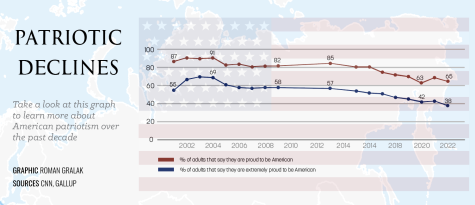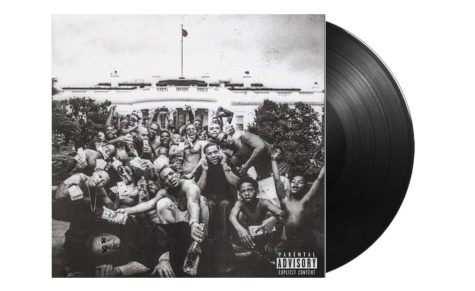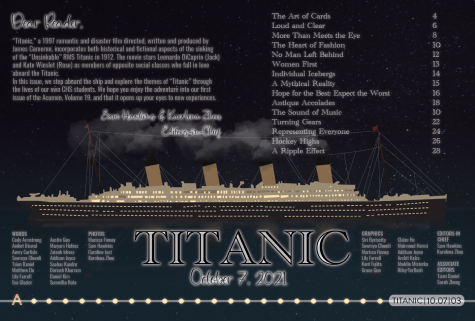Representing Everyone
There are many characters in films and literature that have grown incredibly popular over time. Instances include films such as the cult classic “Titanic,” directed by James Cameron in 1997, which featured Rose (Kate Winslet), a woman ultimately seeking escape from oppres sive social expectations and a marriage she doesn’t want.
sive social expectations and a marriage she doesn’t want.
Dhanya Pathangi, a student writer and sophomore, said that the female characters in books are often not provided with the same treatment as male characters, which she said, holds a mirror to the way female stories are perceived. She said that female characters are often reduced to character tropes, without any sense of true depth.
Pathangi said, “I think it’s honestly a historical thing, because in the past a lot of stories were written by men, and we tend to follow what has been done by using the same archetypes… And I think that because men didn’t see women as actual human beings, they almost turned females into tropes, even though they are actually people.”
Media Specialist John Love said, “We need diversity in books across the board—males, females, people of color, (people with) disabilities.”
Love, who also taught English, said, “Diversity is an important factor in the better representation of people, and female characters.” He said that diversity in authors being published and characters being used is importatn. When considering female characters, he attributes increased diverse representation of women to having more female authors in the public conscience.
Love said, “Some of my most favorite recent books have actually been in the science fiction genre, with female main characters, which shows that female characters can be given complexities and their own character arcs.”
However, according to Pathangi, people tend to build upon what has already been done, which makes it harder to write compelling female characters who are not just tropes. She said this is challenging for writers who have to work towards creating their own new characters that are not recycled as harmful tropes.
She said female tropes seen in the media are especially harmful because they are continuously used in a way that eventually becomes a primary part of the public perception of women and girls, which can negatively affect people.
“Real people are not tropes, they are not just plot devices, they are actual people,” Pathangi said.
Pathangi said audiences allow male characters to have more depth.
“The audience is actually biased towards male characters, based on prevailing gender norms,” Pathangi said. “(Male characters) get a lot more leeway, and a lot of female characters are reduced to plot devices.”
Pathangi said many times it is women who get cast in roles, such as the “manic pixie dream girl,” that only serve to help the main character. Since women who are characterized in this way are not allowed to be these main characters, they always end up propelling the male-driven stories, and thus only serve as plot devices.
Nathan Rabin, who originally coined the phrase “manic pixie dream girl,” later published the article “I’m sorry for coining the phrase ‘Manic Pixie Dream Girl,’” due to what he considered an out-of-context usage of the phrase to devalue many women, which diverted from his true idea.
As he originally wrote, “(The ‘manic pixie’ is) an archetype, I realized, that traps into a particular male fantasy: of being saved from depression and ennui by a fantasy woman who sweeps in like a glittery breeze to save you from yourself, then disappears once her work is done.”
Self-proclaimed popular culture examiner and feminist, junior Anushka Pandey, said that ideas spread by the portrayal of women in girls in media translate off-screen as well. For example, she said female artists are not given the same amount of respect as their male counterparts.
“If you look at interviews, for example, if they are asking female actresses something, there is nothing ever asked about the depth of their characters. They’re asked more about fashion or things like that, versus male actors who are allowed to have more depth in their characters,” she said.
Overall, Pandey said, “I think if you don’t put an emphasis on character development for both males and females, you aren’t going to have any character development for females.”












